The AC75 Equipment and Safety Procedures
The AC75 yachts are highly technological capable of reaching very high speeds. For this reason, precise rules are in place to ensure the safety of everyone involved in training and race sessions.
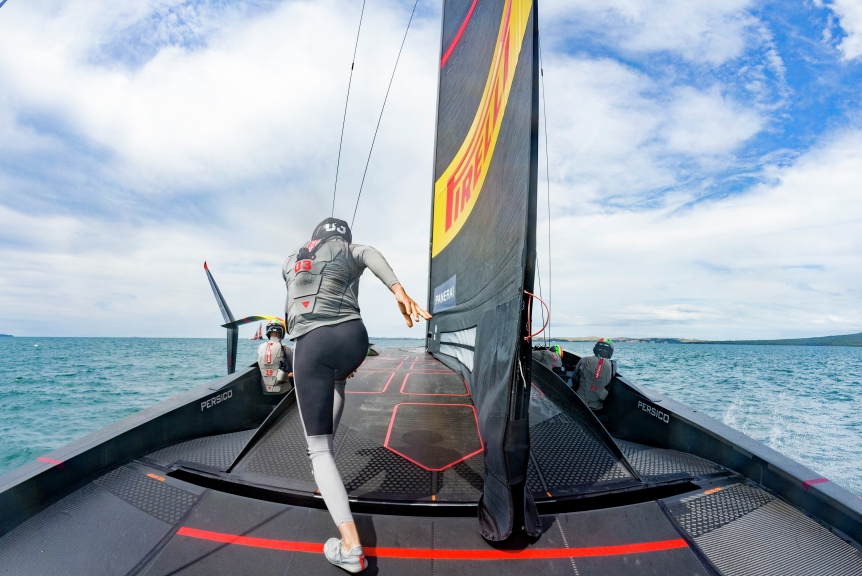
In the most recent editions of the America’s Cup, boats have reached increasingly impressive speeds. Since 2010 we have seen a remarkable development in technology, accompanied by an escalation in terms of boat performance. The flying AC72 catamarans of the 34th edition, followed by the AC50 boats in the 2017 edition in Bermuda, often reached 40 knots. But in the latest edition held in Auckland from January to March 2021 it was seen how a 75-foot monohull with foils can reach over 50 knots of speed.
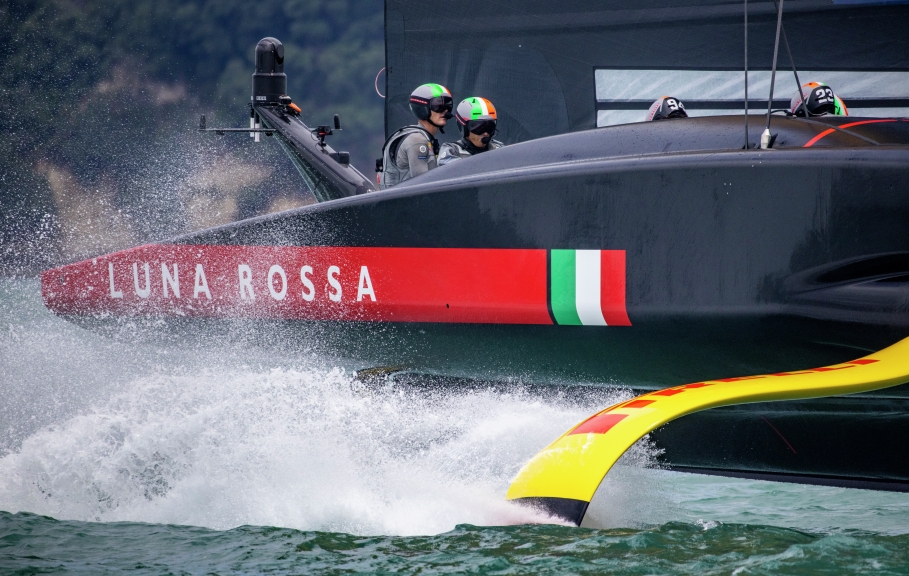
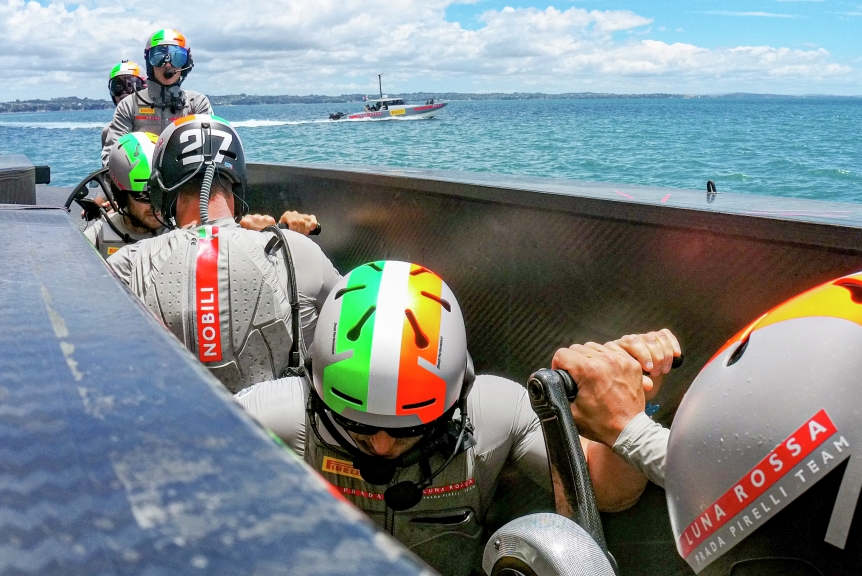
Helming a sailboat at 50 knots, almost 100 km/h, requires extreme attention, especially during the manoeuvres which must be performed to perfection. Even the smallest mistake can be fatal, with the risk of compromising not only the regatta, but the boat and the safety of the sailors as well.
Given the dangers that can occur in sailing such extreme boats, the America’s Cup safety protocols provide for very precise rules on board.
Sailors on the AC75 boats wear PFDs (personal floatation devices), sophisticated life jackets with precise buoyancy standards. The team, in collaboration with Dainese, has developed the Sea-Guard vest, a life jacket that features foam supports (Dainese Crash Absorb) and low-density polyethylene to cushion and protect the chest from impacts and provide buoyancy and protection all in one.
The jacket is also designed to contain a personal air reserve device. This is a small cylinder of compressed air, attached to a respirator, that allows breathing from 8 minutes to 1 minute, under stress. It was designed to work hand-free during use, in case of entanglement under water due to a capsize of the AC75. This is why each sailor also carries a knife in the front part of the jacket and easily accessible in case of emergency.
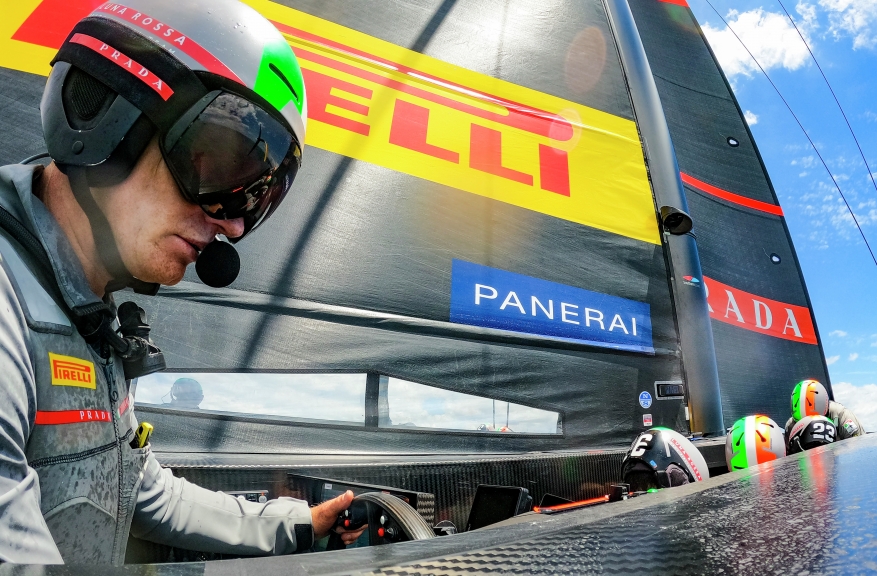
The helmet is a mandatory part of the safety equipment. Based on the class rule, it must comply with specific features and its external surface must be painted in bright colours to ensure high visibility of the crew in the sea. A number corresponding to each sailor is also applied to each helmet and, in the event of an accident, when counting heads it takes less time to recognize the crew members who are safe and rescue those missing.
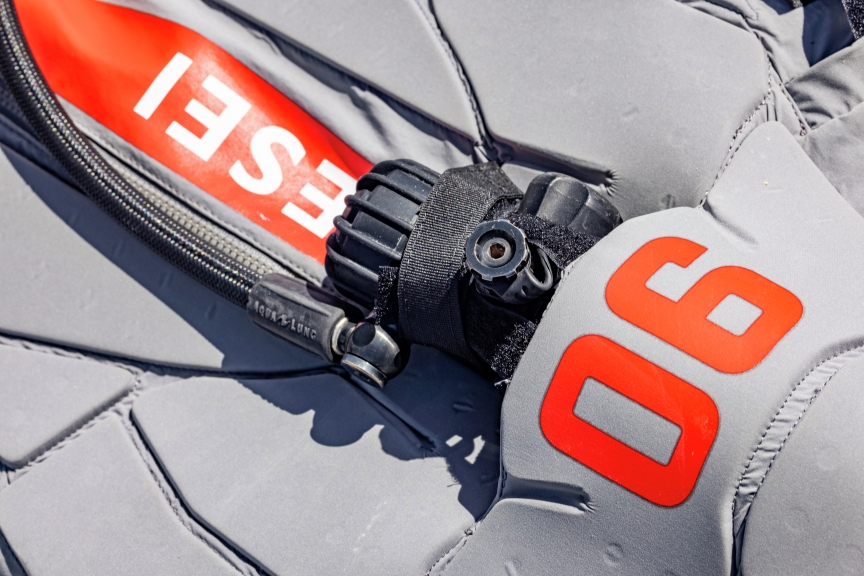
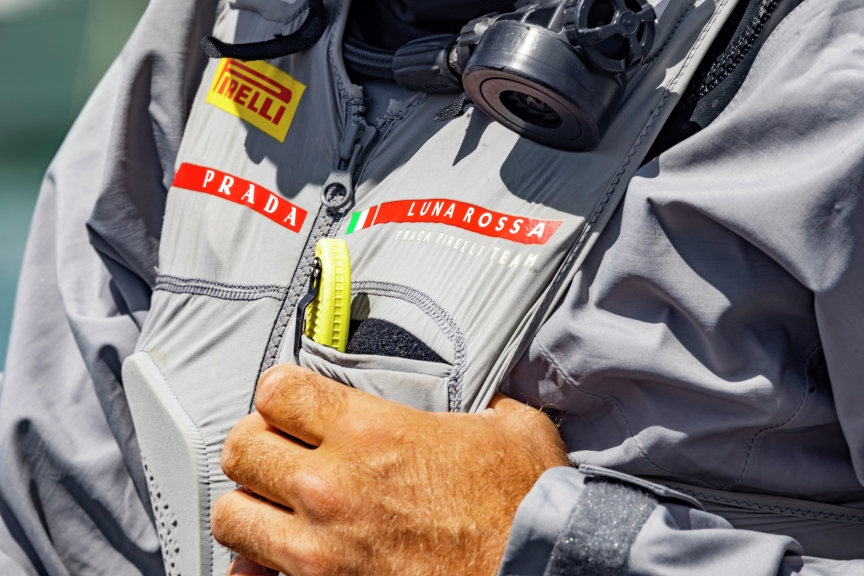
Sailors also train in swimming and freediving sessions, with capsize simulations, to prepare for a potential accident. Each crew member also follows a specific training program which includes BLSD (Basic Life Support and Defibrillation) cardiopulmonary resuscitation courses and man overboard recovery.
To ensure the highest level of safety, each time the AC75 goes out for training or regattas, a diver and a doctor specialized in first aid are present on the support boats, ready to assist on the water. One of the support boats is equipped with all the medical gear, from the defibrillator to the multi-parametric monitor to analyze cardiac activity, as well as all the devices required to stabilize joint trauma and the instruments for respiratory assistance: it is a true water ambulance.
There are also support devices and emergency procedures in case of damage to the hull. Each support boat accompanying the AC75 at sea is equipped with buoyancy reserves - a special type of buoy to prevent sinking -, cable shears to cut shrouds or lines in a few seconds, high-capacity bilge pumps to quickly empty any water on board, and all the equipment necessary for immediate repairs.
Safety must never be underestimated, when going out to sea, whether with an AC75 or a dinghy. Every precaution must be considered in the smallest detail, for the safety of those on the boat and the people around.